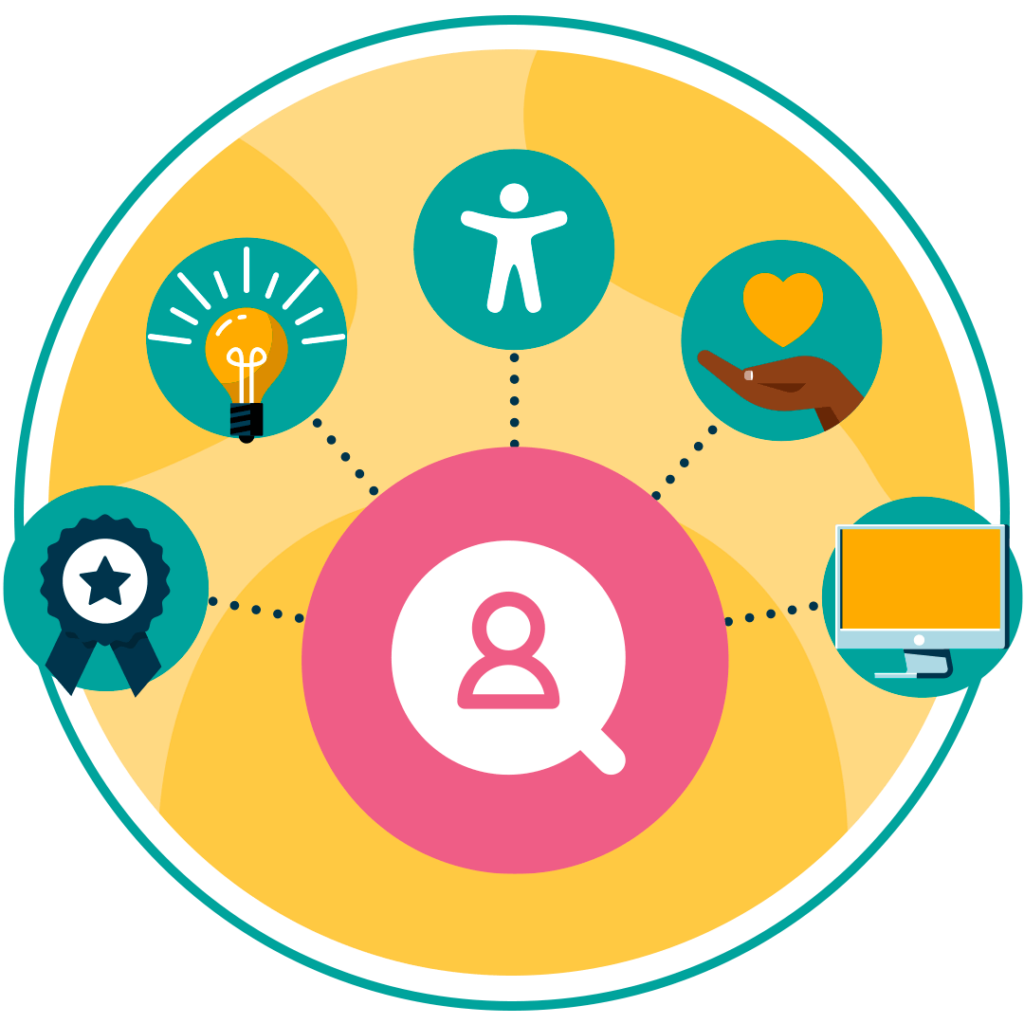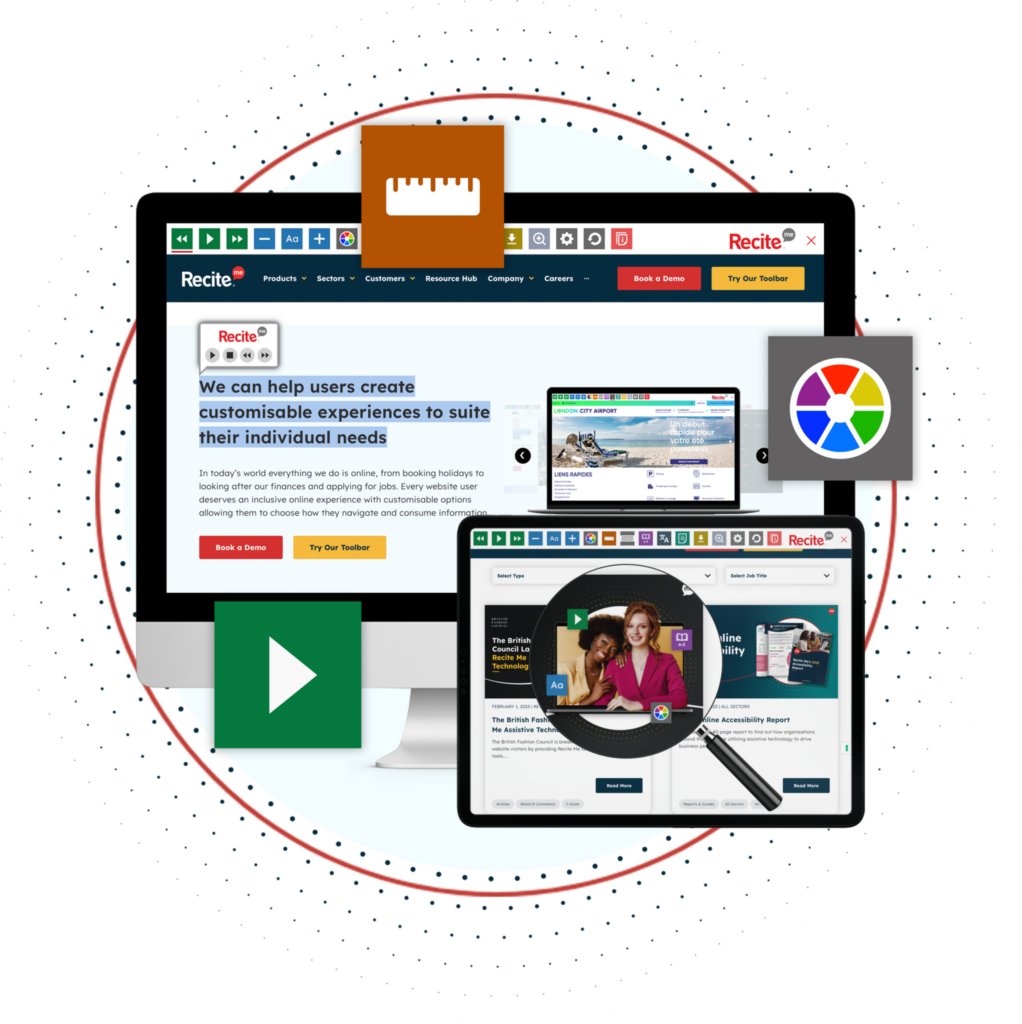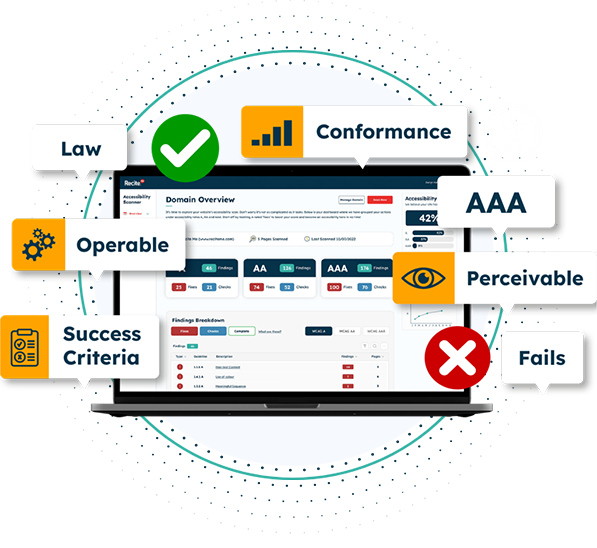Get Your Free Accessibility & Inclusion Toolkit
Download NowDiversity and inclusion (D&I) are terms that have become synonymous with the modern workplace. But these are not just empty words touted as corporate taglines. Diversity and inclusion are real values with a real business impact, affecting finances, productivity, reputation, compliance, and more.
What is Diversity and Inclusion
Diversity itself refers to the variety of differences among people in an organization. This includes, but is not limited to, differences in race, gender, age, ethnicity, sexual orientation, physical abilities, and socioeconomic status. Individuals of a diverse background are often those which have been historically marginalized and find themselves disadvantaged in today’s world as a result.
In the context of business, the word diversity is almost interchangeable with ‘representation’. Promoting diversity therefore requires a concerted effort to move away from antiquated hiring practices and towards adopting newer, fairer approaches to recruitment. It is all about affording opportunities to those individuals who, without intervention, may not have otherwise been granted a seat at the table. The result? Diverse boardrooms and a fairer representation of society in business.

Inclusion, on the other hand, is about creating an environment where all these differences in people are valued and respected. Because, whilst diversity brings a wide range of voices to the table, inclusion is what ensures those voices can be heard. To put this into context, imagine that you have just changed your recruitment policies to help disabled individuals access certain roles within your organization. This is great, but if your facilities are not adapted to their needs, then they will not be able to contribute or participate in the same way as everyone else.
Creating an inclusive environment is all about implementing policies or offering services that are tailored to the needs of those you are trying to recruit. This could mean including cultural holidays as paid leave, for example, or offering tools, such as Recite Me’s Accessibility Toolbar, to support non-English speakers or those with visual impairments.
Why is D&I Important for Businesses
Diversity and inclusion are not just moral imperatives; they are business imperatives. Companies that prioritize D&I tend to outperform their peers. This is supported by numerous studies, not least one McKinsey report which found that companies in the top quartile for gender diversity on executive teams were 25% more likely to have above-average profitability compared to companies in the bottom quartile. Similarly, those in the top quartile for ethnic and cultural diversity were 36% more likely to outperform on profitability.
The results of these studies are not all that surprising. With greater diversity comes a broader spectrum of perspectives, ideas, and lived experiences; all of which lead to new product lines and greater innovation. An organization that is void of female employees, for example, will not be well-equipped to cater for female customers, leaving entire markets untapped. A similar logic and message can be applied for other protected groups such as those with disabilities.
Inclusive work environments bring about a similar array of benefits. By helping employees overcome barriers to participation and giving them the means to thrive in their roles, levels of engagement, motivation, and productivity soar. This means that the customer gets a better overall experience, and businesses get to reap the financial rewards.

The crux of it is, when staff feel as though their needs are being met, they tend to return the favor. It is surprising how many employees are willing to go the extra mile if they are shown just a whisper of care and attention.
Integrating D&I into your core business strategy is not just about compliance or social responsibility; it’s about driving business success.

Free Accessibility Check of your Website
Finding accessibility issues is now easier than ever. Recite Me offers a free automated scan of your website’s homepage to highlight non-compliance. You’ll get recommendations on how to fix them, helping to improve your accessibility score.
Different Business Cases for Diversity and Inclusion
There is no question that diversity and inclusion practices are good for business. But the case for incorporating D&I strategies in your company extends beyond mere financial gain (although this is certainly a part). So, as if you needed more convincing, this section will provide the full spectrum of business cases for D&I.
Creativity and Innovation
One of the most compelling business cases for diversity and inclusion is the breeding ground it creates for creativity and innovation. Diverse teams, with their range of perspectives and lived experiences, elicit new ways of thinking and doing. This diversity of thought is crucial to the progression of any business.
Consider a tech company developing a new software product. A diverse team made up of people from different cultural backgrounds and professional experiences is more likely to identify unique user needs and market opportunities. A disabled individual, for example, might highlight the importance of making the software accessible for those who are visually impaired. While a non-native-English speaker, familiar with the trials and tribulations of navigating a foreign language, might suggest that the software be translated to reach a broader target market. Small changes like this can bring about significant benefits without much work.
It seems logical that greater innovations lead to greater financial gain. But this isn’t just speculation, it is firmly rooted in research. A Boston Consulting Group study found that companies with more diverse management teams have 19% higher revenues due to innovation. This is because diverse teams are better at anticipating shifts in consumer needs and making strategic adjustments.

Enhanced Employer Branding and Reputation
In today’s competitive job market, attracting and retaining the best talent is not easy. One way to sway this heavily in your favor is to boost your employer branding and reputation amongst employees. How can you do this? Well, demonstrating a commitment to diversity and inclusion is one surefire approach.
For many, but particularly young people, D&I is becoming an increasingly important factor in making career decisions. So, when a company visibly supports diversity and inclusion, it sends a strong message to potential employees that it values different perspectives and is committed to creating an inclusive work environment. To this point, a recent Deloitte survey found that 80% of respondents consider inclusion an important factor when choosing an employer. Brushing up on your social responsibility might just be the thing that convinces top-level candidates to choose your company over that of your competitors.
Beyond just employees though, having a strong reputation for diversity and inclusion can also enhance a company’s brand among its customers and investors. Consumers are more likely to support businesses that align with their values. Similarly, investors are increasingly considering D&I as a key criterion in their investment decisions. A company that demonstrates a genuine commitment to D&I can thus attract not only top talent but also loyal customers and supportive investors, driving long-term business success.
More Diverse Teams
Building diverse teams is not just a box ticking exercise. Diverse teams bring with them tangible business benefits as they are better equipped to understand and serve a diverse customer base. This makes them more effective in global markets and highlights the importance of Diversity and Inclusion in Recruitment.
Consider a diverse marketing team, for example. They can create campaigns that resonate with a broader audience. They can avoid cultural missteps and develop messaging that appeals to different demographic groups. This level of cultural competency makes for more effective marketing strategies, helping draw a broader pool of prospective clients to your services.
In fact, one Harvard Business Review study found that cognitively diverse teams are able to solve problems faster than that of their cognitively homogeneous counterparts. Combine faster problem solving with better decision making and you have yourself a pretty strong business case for diversity and inclusion. If you are on the lookout for a competitive advantage that will set you apart from your peers, perhaps this is your answer.
If you are looking for new strategies to improve your hiring process be sure to check out our Inclusive Recruitment Checklist or see how to improve your candidate experience.
Compliance and Mitigating Against D&I related Lawsuits
Mitigating the threat of lawsuits and complying with government regulation should be of top priority for any business. But remaining compliant is becoming an increasingly complex endeavour as regulatory bodies worldwide are implementing more and more D&I-related policies.
The USA has the Civil Rights Act of 1964, which safeguards individuals from discrimination based on protected characteristics such as age, disability, race, religion or belief, sex, sexual orientation, and more. Failure to comply with these laws can result in significant legal and financial repercussions, including fines and damage to the company’s reputation. Compliance with this act requires significant commitment to, and oversight of, D&I strategies.
Other policies and standards, such as the Web Content Accessibility Guidelines (WCAG) and the Americans with Disabilities Act (ADA), are designed to ensure that people facing barriers to digital access are not excluded from the joys of online life. Complying with the WCAG and ADA can be achieved through the use of on-demand accessibility solutions, such as that of Recite Me’s Accessibility Checker, which scans websites for non-compliant or inaccessible features. Essentially, meeting the requirements of something like the WCAG will help organizations comply with more encompassing regulations.
By proactively promoting diversity and inclusion, businesses can reduce the risk of discrimination claims and related lawsuits. So, by implementing D&I policies, providing cultural competency training for employees, addressing discrimination head on, etc., you are not only creating a safer, more inclusive workplace, but you are also protecting your business against legal risks and associated costs.
Better Employee Retention
High employee turnover is one of the main bugbears of running a business. Hiring new employees comes at a cost, both in terms of productivity and finances. New hires often have an adjustment period during which they are afforded a certain degree of leniency as they get accustomed to their new position, impacting productivity for a period of time. More direct financial costs are absorbed through things like onboarding training and the recruitment process.
This is where the business case for diversity and inclusion comes into the equation. When employees feel valued and included, they are more likely to stay at their current company. This is especially true for underrepresented groups, who are more prone to things like discrimination, exclusion, or other barriers to participation. We can therefore consider investing in D&I the antidote to high staff turnover, because with a more stable and committed workforce in place, driving long-term business success becomes easier.
Our 40-page Digital Accessibility & Inclusion Toolkit helps businesses break down online barriers and make a real impact. It offers practical advice on all aspects of digital accessibility, from writing an accessibility statement to accessible website tips and inclusive hiring.

Tools to Help you Attract a Diverse Workforce
At Recite Me we know the importance of inclusion, that’s why we help so many organizations around the world become more inclusive. We provide a number of different accessibility tools that can aid organizations in a number of different ways to become more D&I oriented. Some of these tools include:
Accessibility Toolbar
The Recite Me Accessibility Toolbar is a type of software that installs on to your website to help make it more inclusive. It does this by providing a fully customizable experience to your website visitors. Allowing them to make use of the following features:
- Personalising font size, type, and color options.
- Choosing the exact color contrast between the text and background.
- Utilising the mask screen tool to help with focus.
- Using the ruler tool to make reading easier.
- Downloading content as an audio file as an alternative to reading.
- Converting page content into over 100 on-screen languages.
- Having the page read aloud in a choice of 65 languages.
- Customizing PDF documents or having them read aloud/ translated.
- Zooming in on any part of a webpage.
- Using the built-in spell-checker and a fully integrated dictionary and thesaurus.


Accessibility Checker
Our Accessibility Checker can help address inaccessibility at its root cause. As the tool performs a complete scan of your website in line with the latest WCAG standards and guidelines. By following a simple four step process to help improve your websites accessibility:
- Scan – Choose between scanning on a domain or page level.
- Identify – Highlight accessibility issues on your website automatically.
- Fix – Boost your accessibility score by prioritizing fixes in line with levels A, AA and AAA of WCAG.
- Track – Create and share custom reports in the tool that allow you to track your progress and share it among your peers.



